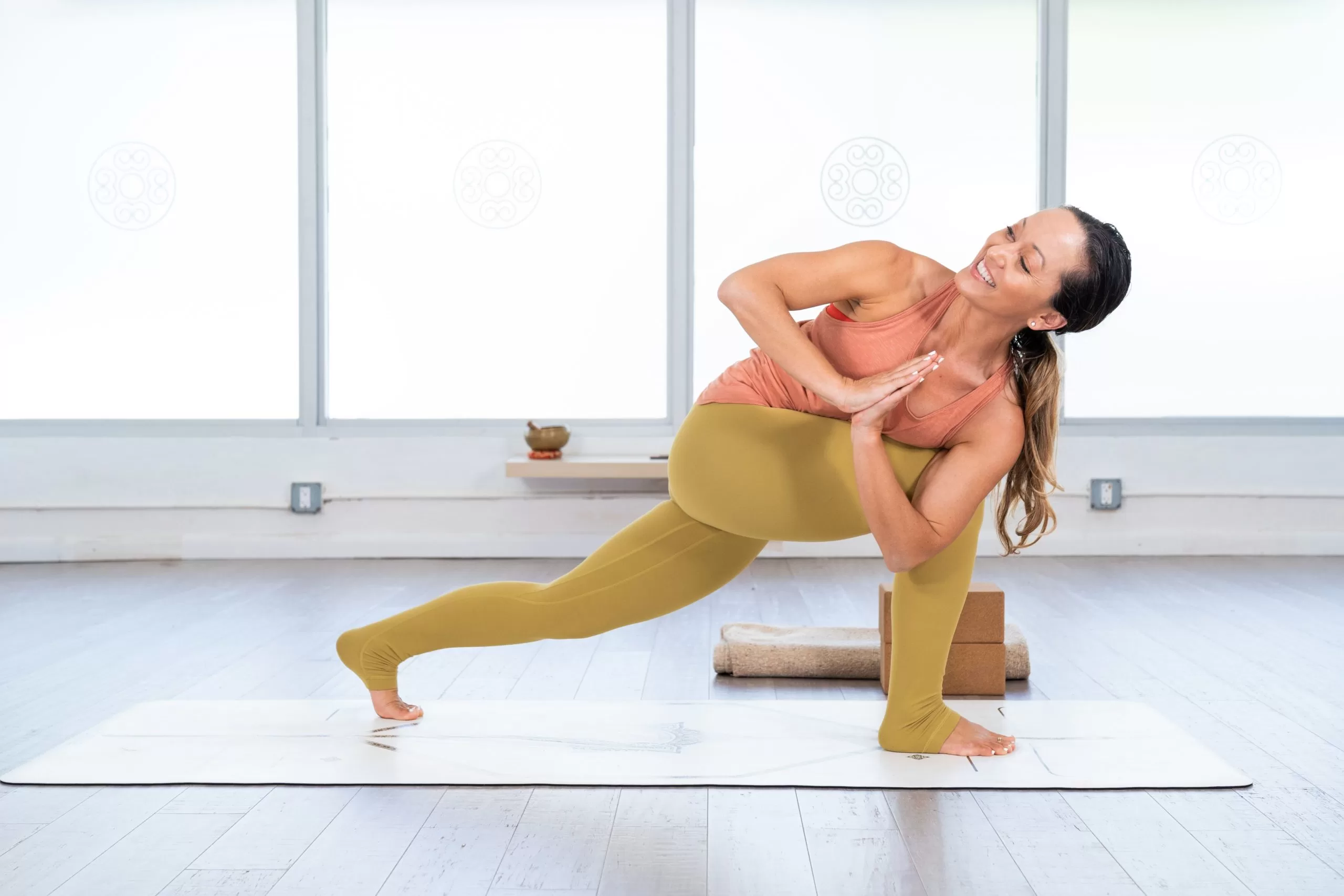
How To Practice Ashtanga Yoga At Home?
Ashtanga yoga is a dynamic form of yoga that involves a series of flowing movements, synchronized with deep breathing. It is a popular form of yoga that has gained immense popularity across the globe for its ability to improve physical fitness, flexibility, and mental well-being. However, many individuals find it challenging to attend regular classes due to their busy schedules or lack of access to a yoga studio. The good news is that you can practice Ashtanga yoga at home, without the need for any special equipment or prior experience.
Practicing Ashtanga yoga at home requires discipline, focus, and a willingness to learn. It can be an enjoyable and rewarding experience that enhances your overall health and well-being. In this article, we will explore the benefits of practicing Ashtanga yoga at home, some tips to help you get started, and a step-by-step guide to performing the primary series of Ashtanga yoga. Whether you are a beginner or an experienced practitioner, this guide will help you develop a consistent and effective Ashtanga yoga practice from the comfort of your own home.
- Create a dedicated space for your practice.
- Set a regular practice time.
- Start with the primary series and work your way up to the intermediate series.
- Use online resources or a book to guide your practice.
- Listen to your body and modify poses as needed.
- End your practice with Savasana.
Practicing Ashtanga Yoga at Home: Tips and Tricks
1. Create a Dedicated Space
Yoga requires a peaceful and dedicated space where you can practice uninterrupted. Choose a clean and quiet room with enough space to move around. Clear any clutter and create a soothing atmosphere with candles, incense or calming music. Set up your yoga mat and props like blocks and straps to support your practice.
Creating a dedicated space for your yoga practice can help you focus and stay motivated. It also signals to your mind and body that you are taking your practice seriously and that it is a priority in your life.
2. Establish a Routine
One of the benefits of practicing yoga at home is that you can tailor your practice to your schedule and needs. However, it is important to establish a routine and stick to it. Decide on a time of day that works best for you and commit to practicing at that time every day.
Having a routine helps you build discipline and consistency in your practice. It also helps you create a habit that becomes automatic over time.
3. Follow a Sequence
Ashtanga yoga follows a specific sequence of postures that builds on each other. It is important to follow this sequence to get the full benefits of the practice. You can find the sequence online or in yoga books.
If you are new to Ashtanga yoga, start with the primary series and work your way up. Take your time and don’t rush through the postures. Focus on your breath and alignment and listen to your body.
4. Warm Up Properly
Before starting your Ashtanga practice, it is important to warm up your body properly. You can do some gentle stretches, sun salutations, or a few rounds of pranayama (breathing exercises) to prepare your body and mind for the practice.
Warming up helps prevent injury, increases flexibility, and prepares your body for the more challenging postures.
5. Use Props
Props like blocks, straps, and blankets can be helpful in supporting your practice. They can help you modify the postures to suit your needs and abilities, and prevent injury.
If you are new to Ashtanga yoga, don’t hesitate to use props. They can help you deepen your practice and make it more accessible.
6. Practice Mindfulness
Ashtanga yoga is a moving meditation that requires concentration and focus. Practice mindfulness by staying present and aware of your breath and body throughout the practice.
Avoid distractions like your phone or TV and focus on the present moment. This can help you reduce stress and anxiety and cultivate a sense of inner peace and calm.
7. Take Rest Days
Ashtanga yoga can be challenging and intense, especially if you are practicing at home without a teacher. It is important to take rest days to allow your body to recover and prevent burnout.
Rest days can also help you avoid injury and maintain a balanced perspective on your practice.
8. Seek Guidance
Practicing Ashtanga yoga at home can be rewarding, but it also has its challenges. It is important to seek guidance from a qualified teacher or mentor to ensure that you are practicing safely and effectively.
You can join online yoga communities, attend workshops, or hire a private yoga teacher to guide you in your practice.
9. Embrace the Process
Ashtanga yoga is a journey, not a destination. It takes time and dedication to master the postures and develop a deeper understanding of the practice.
Embrace the process and don’t focus too much on the end result. Enjoy the journey and trust that with consistent practice, you will see progress and transformation.
10. Stay Open and Curious
Ashtanga yoga is a dynamic and evolving practice that can teach you a lot about yourself and life. Stay open and curious and approach your practice with a beginner’s mind.
Explore new postures, variations, and techniques. Stay curious about your body and breath, and cultivate a sense of wonder and awe for the practice. This can help you stay motivated and inspired in your Ashtanga yoga journey.
Frequently Asked Questions
Ashtanga Yoga is a traditional and dynamic style of yoga that involves a specific sequence of postures. Practicing Ashtanga Yoga at home can be a challenging but rewarding experience. Here are some frequently asked questions about practicing Ashtanga Yoga at home:
What are the benefits of practicing Ashtanga Yoga at home?
Practicing Ashtanga Yoga at home can provide a greater sense of freedom and flexibility in your practice. You can choose the time of day, the length of your practice, and the pace that suits you best. Practicing at home also allows you to focus on specific areas of your practice that you want to improve, without the distractions of a traditional class.
Additionally, practicing Ashtanga Yoga at home can help you develop a deeper understanding of the practice and a stronger connection to your body and breath. It can also be a great way to cultivate self-discipline and commitment to your practice.
What do I need to practice Ashtanga Yoga at home?
While it is ideal to have a dedicated space for your practice, all you really need is a yoga mat and some comfortable clothing. It can be helpful to have a few props such as blocks, blankets, or straps, but they are not necessary. You may also want to invest in a good quality yoga mat that will provide the necessary support and stability for your practice.
It is also important to have a clear understanding of the sequence of postures in the Ashtanga Yoga practice. You can find many resources online such as videos, books, and articles that provide detailed instructions and guidance for each posture.
How do I create a home practice sequence?
Creating a home practice sequence can be as simple or as complex as you want it to be. Start by choosing the postures that you are most comfortable with and that you want to focus on. Then, gradually add in more challenging postures as you become more confident in your practice.
It is important to listen to your body and not push yourself beyond your limits. Remember that Ashtanga Yoga is a dynamic and challenging practice, so be patient and take your time to build your practice gradually.
How often should I practice Ashtanga Yoga at home?
The frequency of your practice will depend on your individual goals and lifestyle. Ideally, it is recommended to practice at least 3-4 times per week to see the benefits of the practice. However, even a short daily practice can be beneficial for maintaining your connection to the practice and cultivating mindfulness.
It is important to remember that consistency is key in developing a home practice. Try to establish a regular routine that works for you and stick to it as much as possible.
How can I stay motivated to practice Ashtanga Yoga at home?
Motivation can be a challenge when practicing at home, but there are many ways to stay inspired and committed to your practice. Setting realistic goals for your practice and tracking your progress can be a great way to stay motivated.
Additionally, finding a supportive community of fellow Ashtanga practitioners can provide encouragement and accountability. You can join online forums, social media groups, or find a local Ashtanga Yoga community to connect with.
Ashtanga Yoga 15 – 20 minute home practice
Ashtanga yoga is a powerful practice that can help you connect with your breath, calm your mind, and strengthen your body. While attending a class with a qualified instructor is ideal, practicing at home can be an effective way to deepen your understanding of the practice and develop a consistent routine. However, it’s important to approach home practice with intention and respect, and to take steps to ensure that you are practicing safely and mindfully.
By following the tips outlined in this guide, you can establish a home practice that supports your physical, mental, and spiritual well-being. Whether you are a beginner or an experienced practitioner, the key is to be patient, consistent, and compassionate with yourself as you navigate the ups and downs of your yoga journey. With dedication and discipline, you can experience the transformative power of Ashtanga yoga in the comfort of your own home.

